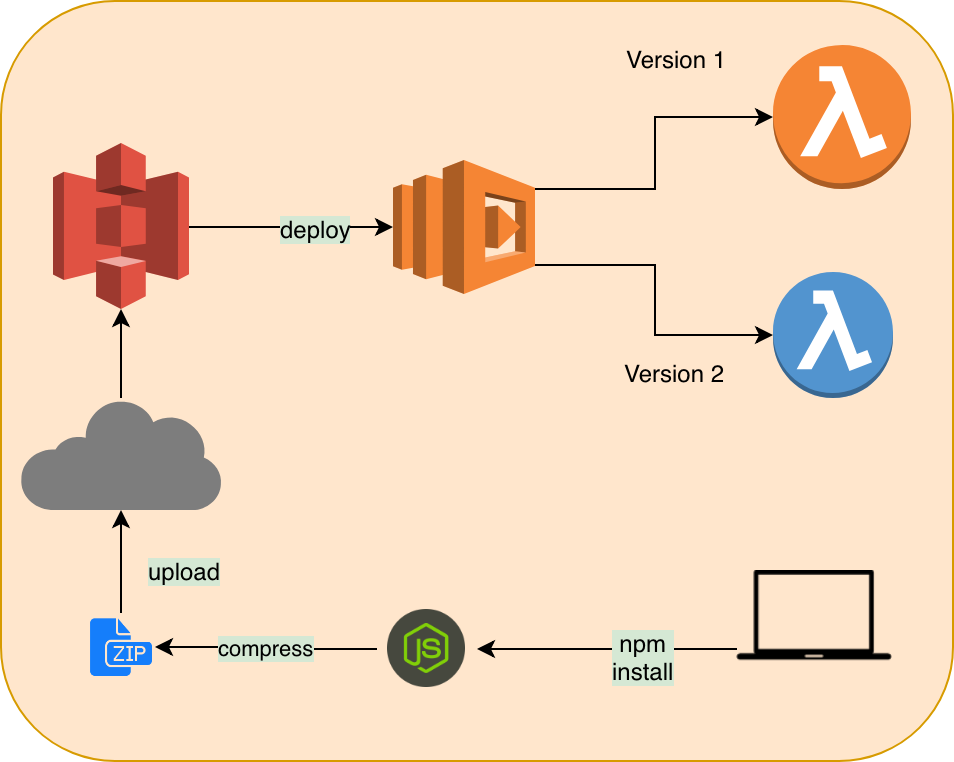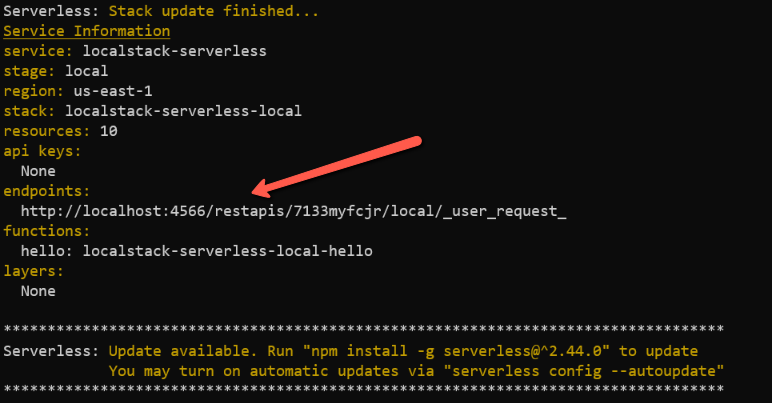

| To start your first project, run “serverless”. | Serverless Framework successfully installed! | > postinstall /usr/local/lib/node_modules/serverless > postinstall /usr/local/lib/node_modules/serverless/node_modules/spawn-sync usr/local/bin/sls -> /usr/local/lib/node_modules/serverless/bin/serverless.js usr/local/bin/serverless -> /usr/local/lib/node_modules/serverless/bin/serverless.js usr/local/bin/slss -> /usr/local/lib/node_modules/serverless/bin/serverless.js This notice will go away with v5.0.2+ once it is released. GitHub blocks requests without a User-Agent header). Npm WARN deprecated Please note that v5.0.1+ of superagent removes User-Agent header by default, therefore you may need to add it yourself (e.g.
#Npm install serverless code
Make code changes in your application and see how fast it's synced into a your application running on Cloud.Philipps-MacBook-Pro:~ philipp$ docker run -it node:latest npm install -global serverless

When you type cloud, you'll enter the interactive Cloud Shell where you can see your developer sandbox URL, and see the logs that the application prints. Type cloud to start working on your project.Run npm i to install dependencies yourself.Get into the directory named same as app by running cd.Note that this operation may fail with "npm install exited with code 1" error. The app is copied into a new directory named same as app, follow the instructions on CLI to start working on it. npm i -g the application to your local and start developing against Cloud: cloud clone that you need to be logged in for CLI to complete the clone operation. The first step to install Serverless Cloud from npm. You can enter immediately or leave it for later.Īfter forking the app to your account, you need to clone it to your local environment and start working against personal instance on Cloud. Serverless Cloud will prompt you to enter value for those parameters.

Note that some applications require you to assign values to their parameters and won't work properly until you pass this parameter. Select one of the ready apps and fork it to your account: You can select one of the applications built by our team and fork it to your Serverless Cloud sccount by following the below steps: You can start by playing with the code of an existing app with this version. Make code changes in your application and see how fast it's synced into your application running on Cloud. Cloud Shell helps you write commands and go back in command history. Next, you'll be in Cloud Shell where you can visit the url, see live logs, make changes, and watch them quickly deploy to your own developer sandbox. Give a name to your app and start developing. You need to be logged in to proceed to the next step and select one of the app templates that lets you build with Javascript or Typescript integrated with React or Vue. Initiate your first Cloud app: npm init cloud Run npm i to install dependencies yourself Type cloud to start working on your project. There are only two other steps required.Ĭreate a new directory: mkdir my- app & cd my- app Note that you should have npm installed in order to run Cloud on your workspace. If you want to start with our templates and build your own application from scratch, this option is for you.


 0 kommentar(er)
0 kommentar(er)
